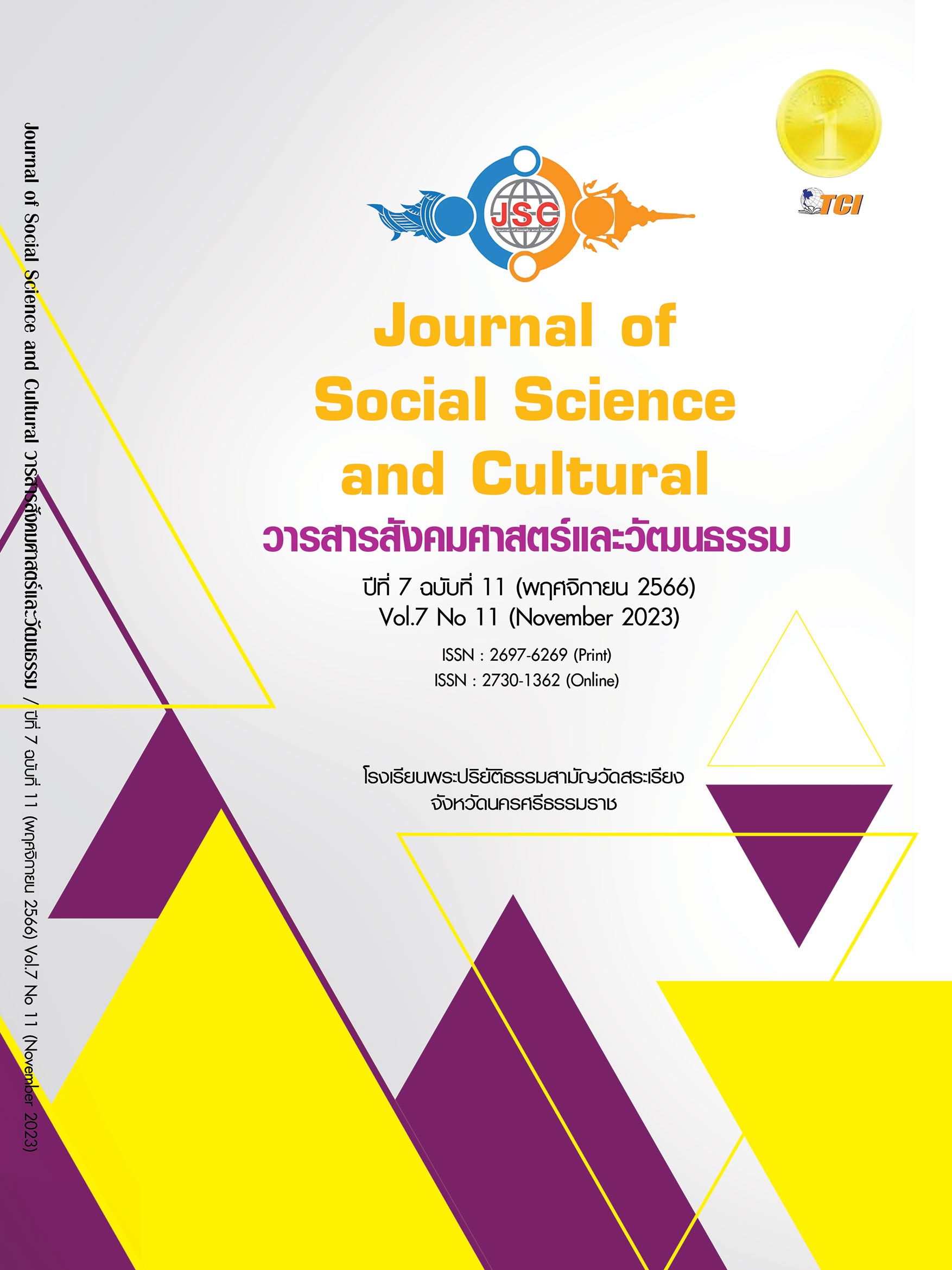STUDY ON ANTIFUNGAL ACTIVITY OF POMEGRANATE EXTRACT
Main Article Content
Abstract
The purpose of this research was to study the fungicidal activity of pomegranate extracts in the group dermatophytes and to test the effectiveness of pomegranate extracts in inhibiting the fungus group dermatophyte by comparing the size of inhibition zone of fungi tested with pomegranate extract and group of fungi. Dermatophyte 5 species using the agar well diffusion method and comparing the results with clotrimazole using pomegranate extract, which is a fruit that has beneficial extracts. Pomegranate can fight inflammation and allergic reactions. It has the effect of reducing inflammatory proteins in cells such as neutrophils, macrophages, and monocytes. It was found that the hot and humid climate of the southern region is a factor that promotes the growth of fungi. As a result, the population is prone to skin diseases caused by fungi and yeast. Medicine to treat skin fungus It must be used continuously, is expensive, and has side effects such as facial irritation, peeling, redness, blisters, swelling, itching and hives. Some patients turn to using natural or herbal medicines instead of medicine. The benefits of pomegranate extract are important in treating various symptoms. Especially the effect of inhibiting fungus. The research results found that mechanism of action of pomegranate extract from experiments can stop the germs of the group dermatophytes between 31.25-11.72 mg/mL, inhibits infection T. mentagrophytes, M.canis, T.rubrum, E.floccosum. M.gypseum by the experimental method of using the antifungal drug clotrimazole at a concentration of 100mg /ml can inhibit infection. M.canis, M.gympseum, T. mentagrophytes, T.rubrum, E.floccosum Pomegranate extract has a mechanism of action through the genetic pathway. The body can respond to proteins in different ways or forms.
Article Details
References
นันทวัน บุณยะประภัศร และอรนุช โชคชัยเจริญพร. (2541). สมุนไพร ไม้พื้นบ้าน เล่ม 1-2. กรุงเทพมหานคร: คณะเภสัชศาสตร์ มหาวิทยาลัยมหิดล.
บาจรีย์ จันทรภาณุกร. (2559). กิณวิทยาคลินิกและไวรัสวิทยาคลินิก. ปทุมธานี: สำนักพิมพ์มหาวิทยาลัยรังสิต.
ปารียา อุดมกุศลศรี, กมลชัย ตรงวานิชนาม, มาลินี ลิ้มโภคา. (2550). ประสิทธิผลของสมุนไพรไทยบางชนิดต่อการยับยั้งการเจริญเติบโตของเชื้อราที่ก่อโรคในปลาในห้องปฏิบัติการ. กรุงเทพมหานคร: มหาวิทยาลัยเกษตรศาสตร์.
พรพรรณ ภูมิรัตน์ และคณะ. (2556). เชื้อราทางการแพทย์. วารสารการแพทย์และวิทยาศาสตร์สุขภาพ, 2(1), 31-44.
สุรชัย รัตนสุข. (2557). ความหลากหลายของแพลงก์ตอนในสระแก้วราชภูมิ มหาวิทยาลัยราชภัฏร้อยเอ็ด. รายงานสืบเนื่องการประชุมวิชาการระดับชาติ สถาบันวิจัยและพัฒนา มหาวิทยาลัยราชภัฏกำแพงเพชร ครั้งที่ 1 (หน้า, 545-549). กำแพงเพชร: มหาวิทยาลัย ราชภัฏกำแพงเพชร.
Abd El Wahab, S. M. (1998). Characterization of certain steroid hormones in Punica granatum L. seeds. Bulletin of Faculty of Pharmacy-Cairo University, 36(1), 11-16.
Chauhan, D. & Chauhan, J. S. (2001). Flavonoid Diglycoside from Punica granatum. Pharmaceutical Biology, 39(2), 155-157.
Comai, K. et al. (1978). Differences between lean and obes Zucker rats : the effect of poorly absorbed dietary lipid on energy intake and body weight again. The Journal of Nutrition, 108(5), 856-35.
Das, P. et al. (2011). Drug utilization pattern and effectiveness analysis in diabetes mellitus at a tertiary care centre in Eastern. Nepal Indian Journal of Physiology and Pharmacology, 55(3), 272-80.
Dean, J. V. et al. (1988). The conversion of nitrite to nitrogen oxide (s) by the constitutive NAD (P) H-nitrate reductase enzyme from soybean. Plant Physiology, 88(2), 389-395.
El-Toumy, S. A. A. & Rauwald, W. H. (2002). Two ellagitannins from Punica granatum heartwood. Phytochemistry, 61(8), 971-974.
Lau, K. K. S. et al. (2003). Superhydrophobic carbon nanotube forests. Nano Letters, 3(12), 1701-1705.


